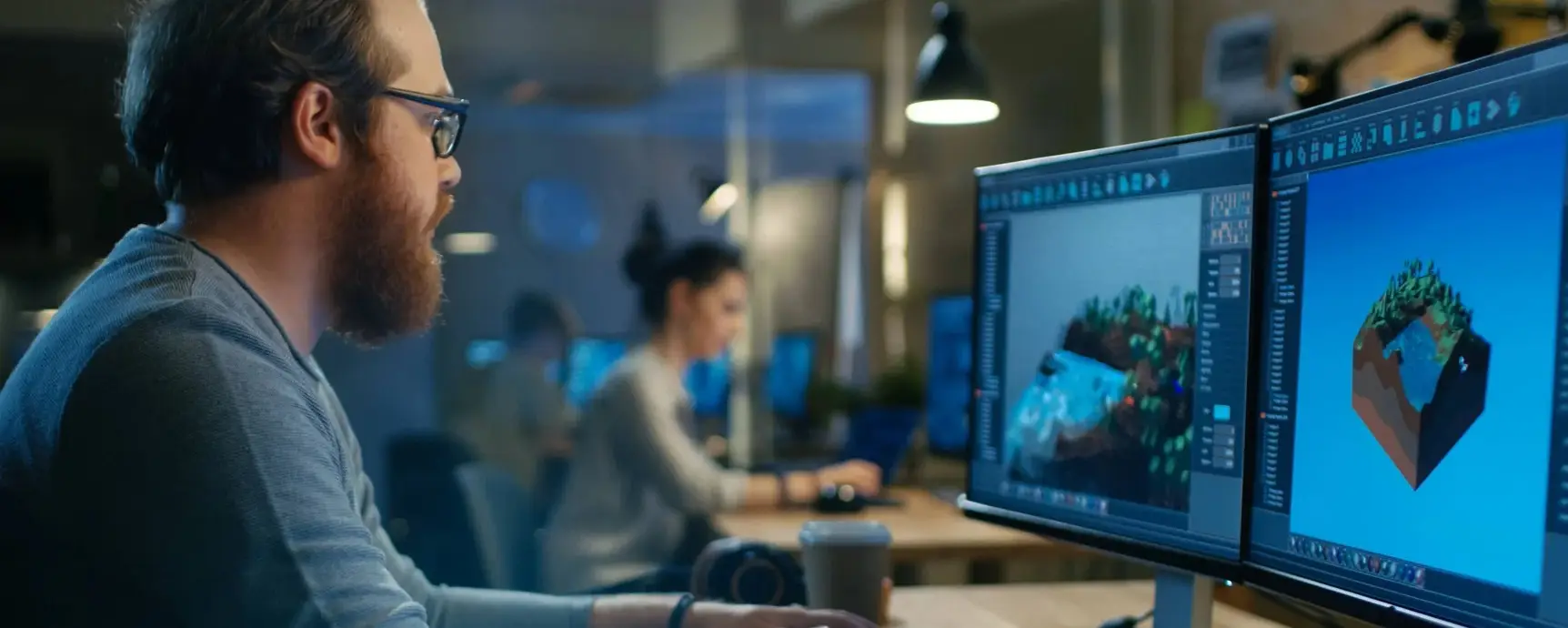It’s not just the mechanics and story that make a game great, but also the world in which players are immersed. Immersive environments are what make games memorable, whether it’s neon-lit streets in a futuristic metropolis, sprawling landscapes in a medieval realm, or eerie corridors on an abandoned spaceship.
Worldbuilding is about creating an environment that’s alive and breathes. Artists, designers and developers work together from the first sketches to create worlds that capture players.
Foundations of Worldbuilding
Each game starts with an original idea. Before an artist can even pick up a stylus to create, he or she must answer several questions:
- What is the story behind this world? What kind of world is it? Is it a dystopian realm ravaged by war, a mythical land filled with ancient magic or a bustling metropolis full of modernity?
- What is the aesthetic and tone? Dark and gritty? Bright and colorful?
- How is the world designed to support gameplay? Open-world exploration, fast-paced combat, puzzle-solving–every mechanic influences the world’s design.
It’s not just about the visuals, but also about how a game’s world functions and feels. The best environments in games tell stories without using words. Abandoned buildings show past tragedies; weathered streets reveal the passage of years, and tall structures create awe.
A First Step to Building Worlds
It all begins with an idea (or, more likely, on a digital canvas) before anything is put into the game engine. Concept artists sketch the world of a video game, defining the style and mood by drawing environments, landscapes and architecture.
Artists and designers work together to create a world that is not only beautiful but also functional. A studio may create hundreds of concept art pieces before settling on a final direction. These early sketches can help to define:
- Color palettes can set the mood, whether it’s warm and inviting or cold and eerie. ).
- Architectural styles that reflect culture and history around the globe.
- Environment storytelling elements like ruins, overgrown cityscapes, or futuristic technology.
Concept art is the foundation of worldbuilding–without it, 3D artists and level designers wouldn’t have a clear vision to bring to life.
Bring worlds to life with 3D!
Texturing & 3D modeling
After the concept art has been finalised, 3D modeling is the next step. Artists use Blender, Maya or ZBrush tools to create environments, buildings and props. The models are then textured for realism. Wood looks like real wood, metal is sheeny, and stone looks rough and weathered.
Level Design & Environment Assembly
The level designers assemble 3D assets into playable environments. It’s not just about placing items, but creating a flow to encourage exploration and enhance gameplay.
A well-designed game level:
- The player is guided in a natural way without feeling restricted.
- Balance open spaces with detailed, tight areas.
- To reward curiosity, place hidden secrets and points-of-interest.
Lighting, atmosphere, and sound design
Lighting is a key factor in making the world seem alive. Shadows, color grading and light sources are often the difference between a bright and welcoming city and an ominous, fog-covered village.
Ambient effects such as fog, rain or dust drifting add depth to a world. Sound design is also important. Rustling leaves, distant echos, or even a subtle hum inside a futuristic laboratory can all create an immersive experience.
Optimizing for Performance and Playability
If the game runs badly, a visually stunning world is useless. This is why developers optimize:
- Use Level of Detail (LOD), a technique to improve performance across different hardware.
- Reduce unnecessary assets or render load to avoid lag.
- Playtesting is a great way to find bugs, collision problems, and visual glitches.
Case studies: Iconic Game Worlds
Consider: Some of the most well-designed games worlds look like real places that you can visit. Consider:
- The Witcher 3 Continent – A sprawling, rich world filled with dense forests, war-torn battlefields, and villages.
- Hollow Knight’s Hallownest: A haunting, underground kingdom with a tale at every corner.
- Cyberpunk’s Night City is a neon-drenched city bursting with detail.
These worlds are all unique, because they have been designed to be both immersive and engaging.
The conclusion of the article is:
Worldbuilding is more than just creating a beautiful background. It’s about creating an immersive world that makes players want to stay. Every step, from concept art, to 3D modeling and level design, to atmospheric effects, contributes to a game’s final experience.
It’s not just about what you see, but how it feels. It enhances gameplay and creates a lasting impression. In the hands of an experienced gamete studio, this space will be remembered long after the players have put down their controller.





